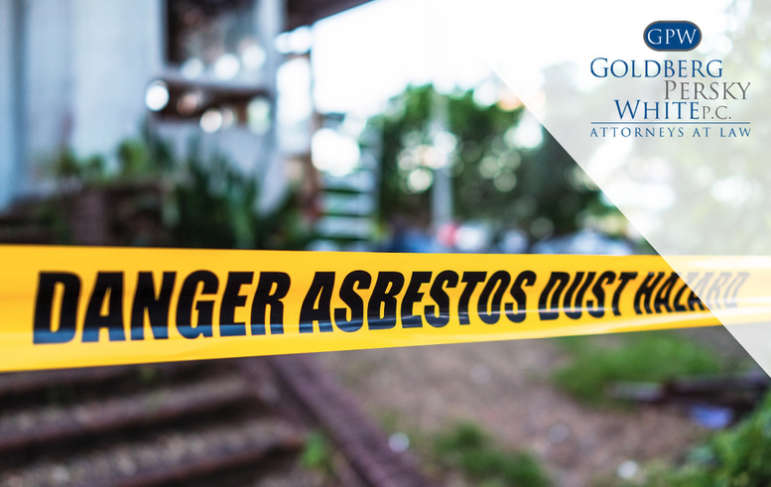Employer Honesty Involving Asbestos
Over 3,000 cases of mesothelioma are diagnosed every year in the U.S., and most are caused by asbestos exposure in the workplace. Before the 1970s, many employers knew about the health risks of asbestos exposure but hid did not inform workers and the public. What has been done to ensure employers protect workers from the health risks of asbestos?
Widespread Use of Asbestos Causes Health Problems for Workers
With the industrial revolution and the rise of automated machinery and factories, asbestos use significantly increased by the 19020s. It’s fire-resistant and insulation properties made it popular building material used in a variety of industries. Suspected health risks associated with asbestos exposure can be traced back decades outside the U.S., but it wasn’t until the mid-1960s that the relationship between asbestos exposure and disease was thoroughly brought to light.
When lawsuits against manufacturers making or using asbestos products resulted in damage awards to work-related asbestos victims, companies began covering up facts to protect themselves from liability.
Asbestos is a Deadly Carcinogen
Asbestos in finished products, such as insulation materials, is not a risk to workers’ health if the product is not disturbed or damaged. Asbestos fibers can break easily into dust or tiny particles, which may be inhaled or swallowed.
The silicon-based fibers are like microscopic glass slivers, which become trapped in the tissues of the lungs and digestive system. Due to its indestructible nature, asbestos fibers remain in the tissue permanently. The toxic fibers work deeper into soft organ tissue and cause impaired breathing, scarring, tumors (mesothelioma), lung or gastrointestinal cancer, and bodily organ failure. This process can take 10-40 years to occur.
In 2017, medical experts estimate that 20 percent of all deaths are from lung cancer for workers exposed to asbestos. Mesotheliomas account for 10 percent of the deaths. While some asbestos-related diseases have treatment options, mesothelioma has no known cure.
OSHA Requires Employers to Protect Workers from Exposure to Hazardous Substances
Due to the hazardous carcinogen that cannot be removed, asbestos is classified as a “Right to Know Hazardous Substance” by the EPA, OSHA, and numerous other government organizations
the Occupational Safety and Health Administration (OSHA) began regulating occupational asbestos exposure in 1970. OSHA’s standards mandate employers to protect their workers by implementing procedures that:
- Assess the levels of asbestos in their workplace
- Separate regulated areas from the regular workplace
- Post hazardous substance signage
- Use engineered ventilation systems with HEPA filtration
- Control work practices to reduce levels of airborne asbestos
Additionally, employers are responsible for providing and ensuring proper training in personal protective equipment, including respirators. Employers are required to train each worker who could be exposed to airborne asbestos above the Permissible Exposure Limit and each worker who performs Class I through IV Asbestos operations.
No amount of exposure to a carcinogen is considered safe, so employers must reduce all contact with asbestos to the lowest level. Exposure limit guidelines for asbestos fibers longer than five micrometers:
OSHA states that the legal airborne asbestos permissible exposure limit = 0.1 fiber per cubic centimeter over an 8-hour work shift and not over one fiber per cubic centimeter during any thirty-minute labor time.
NIOSH recommends an airborne asbestos exposure limit is = 0.1 fiber/cc averaged over a 10-hour work shift.
ACGIH suggests the threshold Asbestos limit value is 0.1 fiber/cc over an 8-hour work period.
Workers who suspect they are exposed to an asbestos-related disease should report the suspected violation to OSHA. OSHA can impose monetary penalties on companies that expose workers to Asbestos and other workplace hazards.
Workers diagnosed with an asbestos-related disease are entitled to seek compensation to help pay medical expenses, provide for their families, and hold employers accountable for their pain and suffering. Consult with Goldberg, Persky & White P.C. to assess your legal rights and options.
Sources:
“Asbestos Companies Hid the Danger for Decades” Asbestos Nation [Link]
Swetonic M, “Why Asbestos?” Asbestos Nation (1973) [Link]
“EPA Actions to Protect the Public from Exposure to Asbestos” United States Environmental Protection Agency (2022) [Link]
“Asbestos and Health: Frequently Asked Questions” Agency for Toxic Substances and Disease Recovery [Link]
“Asbestos and the Workplace” Communications Workers of America (2017) [Link]
“§ 302.4 Hazardous Substances and Reportable Quantities” The Electronic Code of Federal Regulations (2022) [Link]
“The History of Asbestos” S.C. Department of Health and Environmental Control [Link]
“Asbestos: Worker and Employer Guide to Hazards and Recommended Controls” National Institute of
Environmental Health Sciences (2015) [Link]
Bako Gregg, “Exposure limits: PELs and TLVs” Safety+Health Magazine (2012) [Link]




